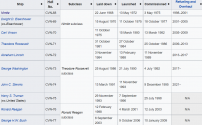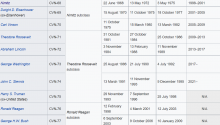I think we have all misinterpreted one thing. "Design is not finished yet" doesn't necessarily mean the "its subsystems' tests have started yet." I remember someone posted that the land-based reactor demonstration project was in Sichuan and construction began as early as 2018 and the codename for CV reactor should be 龙兴 or something else.
Could someone please post construction timetable for Nimitz or Ford, for a meaningful comparison?
Also it is interesting that the moderator deleted the whole original thread discussing CV development.
To clarify, I am not talking about the maturity of the aircraft's own internal subsystems (like catapults, propulsion or reactor).
I wasn't even necessarily talking about the fourth carrier being CVN -- my post applies for the "fourth carrier" in general, whether it is a second 003 or the CVN.
Hypothetically speaking, if initial construction work for the fourth carrier begins in the second half of this year (steel cutting for modules), it will still take a good 2 years at least for the ship to be launched -- i.e.: late 2024 or early 2025.
Even assuming all internal subsystems on the carrier are mature (regardless of whether it's a second 003 or the CVN), it will still take another year of fitting out, and another year of sea trails. (Keep in mind this is all discussing the fourth carrier as if it is able to breeze through all of these milestones without issue in a very optimistic way)
By then, it will be late 2026 or early 2027, for the ship to "enter service".
However, there's a major difference between "entering service" and being "combat effective". That process (depending on the degree of past institutional carrier experience and existing carrier related infrastructure) might take anywhere from two years to multiple years. Let's assume it is only "a year and a half" (again, wildly optimistic), and that the fourth carrier is "combat effective" by mid 2028.
That's about six years from first steel cutting to being operationally "combat effective" -- again, I want to reiterate, this is a wildly optimistic, for the purposes of discussion.
Now, great, the fourth carrier is "combat effective".
BUT, there's also a major difference between a carrier itself being "combat effective" versus the PLAN's overall carrier fleet of the 2025-2030 (or late 2020s era) being sufficiently capable to be the best procurement option in terms of strategic opportunity cost.
As I wrote in #7544 -- an ideal minimum carrier force for the PLAN is to possess six combat effective carriers, with a sufficient number of competitive surface and subsurface escorts, as well as possessing a capable and mature airwing and crew.
If we assume that the carrier has a capable and mature airwing and crew due to it somehow managing to achieve "combat effectiveness" by 2028, that is great....
.....but it still leaves the issue of having sufficiently capable surface and subsurface escorts (in this case, the major question is subsurface escorts as they would need a very capable and competitive SSN fleet to meet the threat of US and regional submarines), as well as the question of whether four carriers in the late 2020s is a sufficiently large carrier fleet to meet the challenges of that period of predicted geopolitical tension and possible conflict..... and all of that in turn has to be weighed against whether money for that period might be better invested into other more mature and less risky capabilities instead.
Or to sum up my position: "What is the opportunity/cost for pursuing a fourth carrier that will enter service in the late 2020s, in context of the PLA's overall assessment of its strategic environment of the late 2020s -- and how does that compare to delaying its fourth carrier to enter service somewhere down the line a few years later (such as early 2030s) and to use money intended for the "fourth carrier in the late 2020s" for other capabilities and assets intended to enter service in the late 2020s instead?"
Again, I don't have a clear answer for it, but I do think the rationale underlying it, and the timelines we are facing now, is one where we cannot simply assume that buying a fourth carrier intended for service in the late 2020s is the PLA's best choice in terms of opportunity/cost.
And I want to reiterate -- six years from steel cutting to combat effectiveness is ludicrously optimistic. Even if the fourth carrier is a second 003, in reality it will end up taking 2-3 years or even 3-4 years more than that (i.e.: 8-10 years from steel cutting to combat effectiveness).




